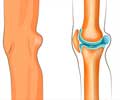Highlights:
- Arthroscopic stabilization is performed on athletes with fewer incidents of pre-operative shoulder instability
- Shoulder instability or dislocation often results in loss of function and pain in the shoulder
- Performing arthroscopy on young athletes after the first dislocation is highly recommended, as it can bring better outcomes
Arthroscopic stabilization, a procedure to correct shoulder dislocations has better outcomes if patients are properly selected and if the surgery is performed on athletes with fewer incidents of pre-operative instability, according to researchers who presented their work at the American Orthopedic Society for Sports Medicine's (AOSSM) Annual Meeting in San Diego.
Arthroscopic procedures are a leading surgical option due to advantages of requiring
less operative time, shorter hospitalization, and less postoperative narcotic use.‘Young athletes with shoulder dislocation have high recurrence rates and lower rates of return to sport following arthroscopic stabilization. Arthroscopy might be most beneficial to athletes when performed after the first dislocation.’
In a study conducted by Frank A. Cordasco, MD, MS and his colleagues from the Hospital for Special Surgery in New York City, about 67 athletes between the ages of 14 and 20 (19 females and 48 males who averaged 17 years of age) with shoulder instability were treated with
arthroscopic anterior stabilization performed in the beach chair position by a single surgeon.
The primary results determined were the rates at which revision surgery had to be performed and return to sports at a minimum follow-up of 2 years.
The researchers found that
- The rate of revision surgery was very low, at 6%
- The percent of athletes who returned to the sport at an average of 7 months following surgery was 82%
- Forty-two (63%) of the 67 athletes had experienced only one dislocation and only a few had more than two instability episodes
- All of the six recurrences occurred in males
"Our study highlights the importance for young athletes with shoulder instability, undergoing a thorough preoperative evaluation to determine the number of instability events and to obtain appropriate advanced imaging when the significant bone loss is suspected. Each pre-operative instability episode can result in greater degrees of bone loss, which results in higher failure rates following arthroscopic shoulder stabilization," said Cordasco.
Cordasco says that undergoing pre-operative evaluation can determine the best procedure to select from the menu of operations available to manage
shoulder instability. The types of operations include:
- Arthroscopic stabilization
- Open stabilization and
- Bone augmentation, such as Latarjet reconstruction
When the young athlete chooses the appropriate selection from the menu, the resulting outcomes will allow this high-risk group to predictably and reproducibly get back in the game.
This study demonstrates that the revision surgery rate is low and the return to sport rate is high when an arthroscopic stabilization is performed on the high-risk young athlete who presents with fewer episodes of pre-operative instability; also
the rates might be the best if surgery is done after the first dislocation. Advertisement
Cordasco said that more research has to be conducted for this challenging group of young, active high-risk athletes to continue to improve the outcomes.
References:
- Andrea Pantalone, Daniele Vanni, Matteo Guelfi, Michele Di Mauro, Michele Abate, and Vincenzo Salini., "Arthroscopic treatment of shoulder instability in professional athletes" Muscles Ligaments Tendons J 2017 Oct-Dec; 6(4): 440–444. doi: 10.11138/mltj/2016.6.4.440
Advertisement
Source-Medindia













